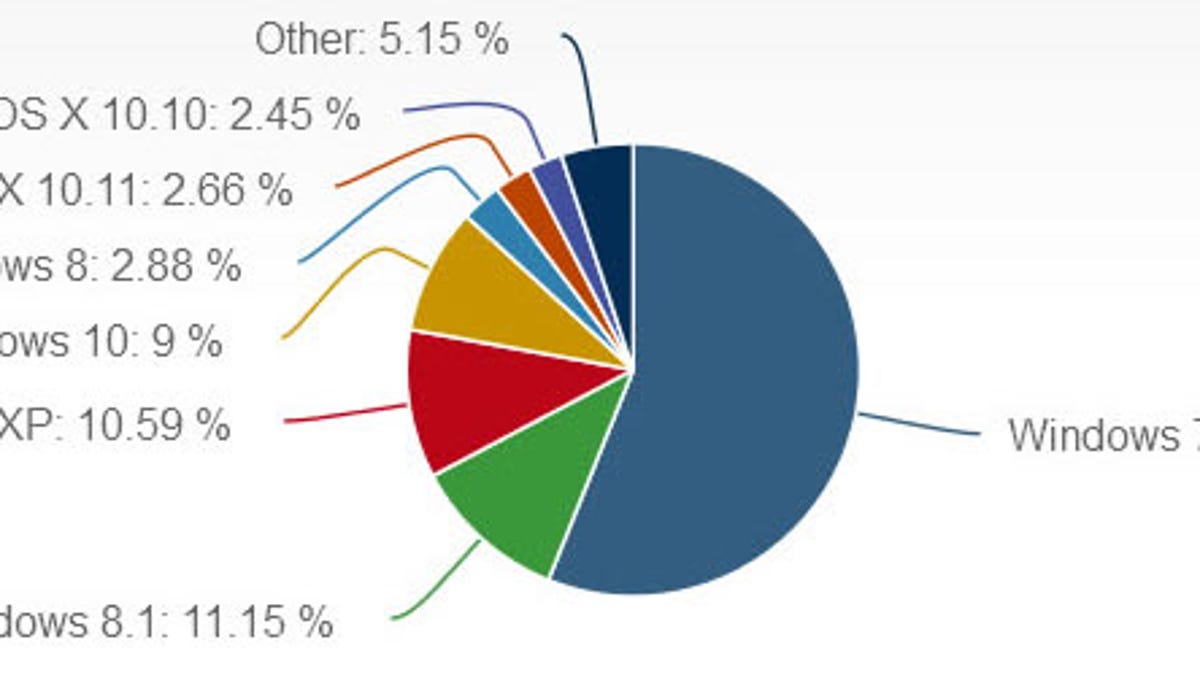Windows 10 continues to crawl its way onto desktop PCs
The latest version of Microsoft's operating system is making baby steps in its effort to win over users, according to Web tracker NetMarket Share.
Microsoft's Windows 10 isn't setting any speed records moving up the desktop operating system food chain.
The latest edition of Windows snagged a 9 percent share worldwide of all Web traffic generated by desktop operating systems in November, NetMarketShare said Tuesday. That number was up around a percentage point since October. Overall growth had been declining since the initial share of 5.2 percent in August after Windows 10 officially debuted July 29.
The slower uptake in Windows 10 adoption over the past three months comes as Microsoft needs to prove to consumers that it can still make an appealing and user-friendly operating system after the misfortune of Windows 8. Many consumers hesitated upgrading to Windows 8, leading Microsoft to offer Windows 10 for free for Windows 7 and 8.1 users.
The free offer is good for only the first year. After that, Windows 10 will cost $119 for the Home edition and $199 for the Pro version. So growth in adoption of the new version will be a critical factor for Microsoft over the first half of 2016. The offer has one drawback, however, in that it could prevent Windows 7 and 8.1 users from buying new PCs or tablets, both of which are in a sales slump.
But Windows 10 is designed to work across a variety of devices from PCs to tablets to mobile phones. The Redmond, Washington, tech giant is looking to its newest version of Windows to grab more users across its entire ecosystem. With Windows 10, the software giant has brought back the Start menu, added its Cortana voice assistant and made improvements to the entire layout and design in an effort to bring people on board.
Microsoft also continues to try to enhance Windows 10. On November 13, the company released its first major update to the OS, promising faster performance, improvements to Cortana and more features for the Edge browser.
A Microsoft spokeswoman said the company would not comment on NetMarketShare's third-party data. In early October, Microsoft said that Windows 10 had already been installed on more than 110 million devices since its launch. The company's ultimate goal is to see Windows 10 on more than 1 billion devices within the next two to three years.
Among other editions of Microsoft's OS, Windows 8.1 grabbed an 11 percent share of Web traffic, finally stealing second place from Windows XP with a share of 10.6 percent. Windows 7 remained at the top of the lineup with a 56 percent share.


